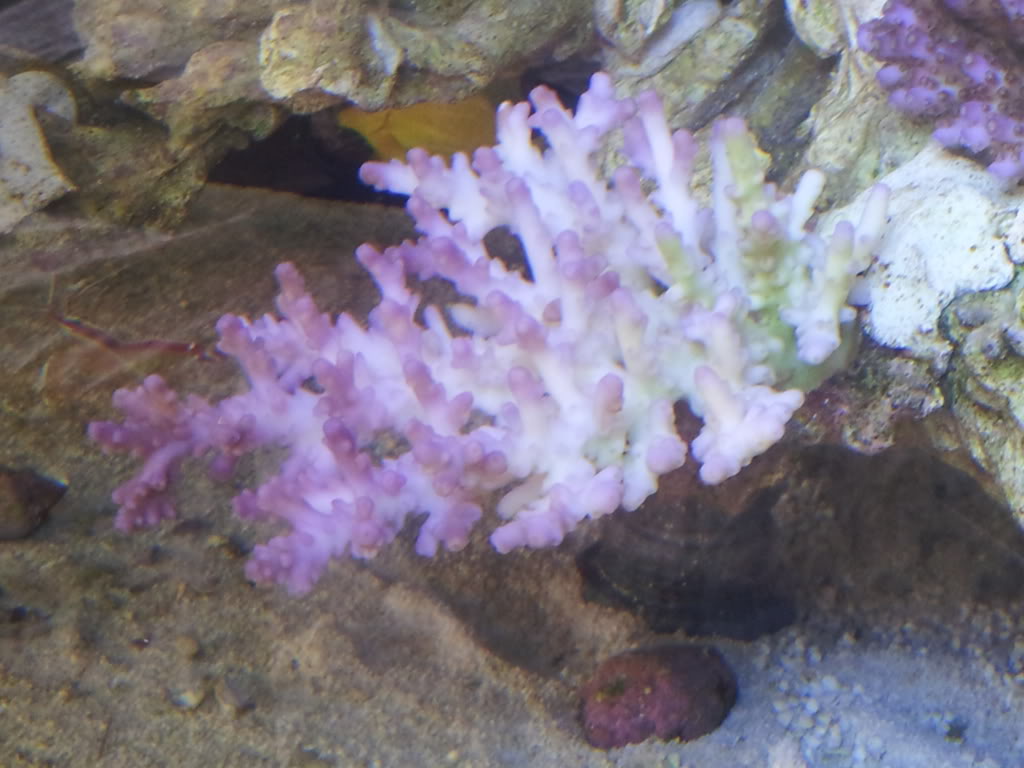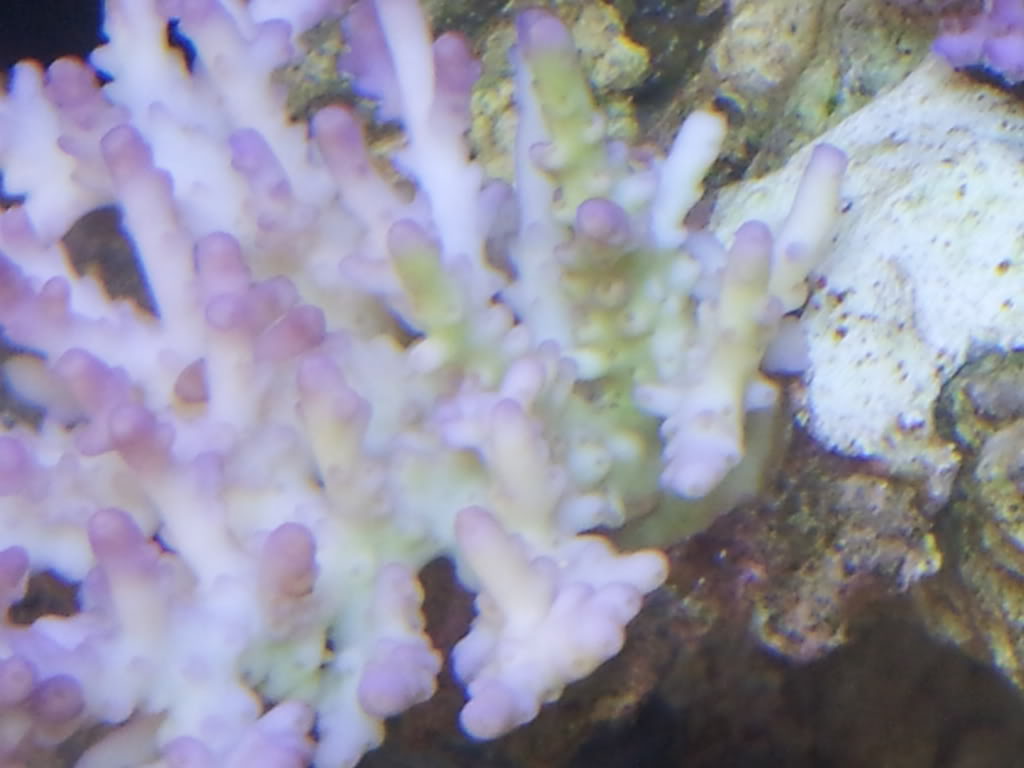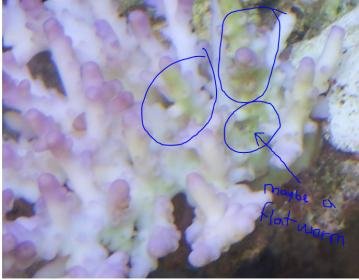Navigation
Install the app
How to install the app on iOS
Follow along with the video below to see how to install our site as a web app on your home screen.
Note: This feature may not be available in some browsers.
More options
You are using an out of date browser. It may not display this or other websites correctly.
You should upgrade or use an alternative browser.
You should upgrade or use an alternative browser.
Is my coral infected some disease or parasite?
- Thread starter Aquatix
- Start date
- Tagged users None
It look bleached from too much light . From the yellowing of the tissue I also suspect maybe you have some flat worms on it. Do youself a favor and un mount the coral put some of your tank water in a pan or something large enough to put the coral with enough to completely submerge the coral and enough room for your hands to work as well. Grab a clean turkey baster and blast water at the base and other parts of the coral and watch very carefully for something that flies off the coral.
also check at the base for a bunch of small egg just in case and if you left some base behind in the tank take a close look there as well.
.

look in that rectangle shaped area around the entire base for eggs
look in that rectangle shaped area around the entire base for eggs
I took this photo when the light is off. It's impossible to see it when light is on.
I don't want to take any risks.
I think that I am going to cut it and throw a way the infected area, then I am going to dip it, using TLF ReVive
any other ideas ?
I don't want to take any risks.
I think that I am going to cut it and throw a way the infected area, then I am going to dip it, using TLF ReVive
any other ideas ?
Well bud all I can say is what I think I see in the picture, it is best you investigate i'm going to try to find the Bayer dip thread for you, that stuff works the best.
Here it is WatchGuy made a awesome thread about this just follow along and read instructions carefully as Bayer is a pesticide. On that note the fact that Bayer made it, I believe myself that it is truly safer than other dips because it is made in a labratory by chemists who make regulated effective products
https://www.reef2reef.com/forums/ge...cide-coral-dip.html?highlight=Bayer+coral+dip
https://www.reef2reef.com/forums/ge...cide-coral-dip.html?highlight=Bayer+coral+dip
Last edited:
It looks like a cleaner shrimp ghost to the left of the coral in your first pic. The coral looks bleached to me, how long have you had it?
Last edited:
I have it about 7 weeks. Please note that when the light is on you can't see this green area
12/15/12 the day that I bought it
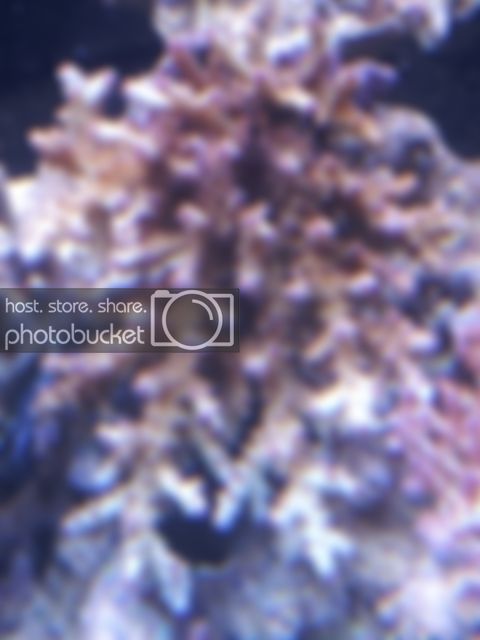
12/7/12
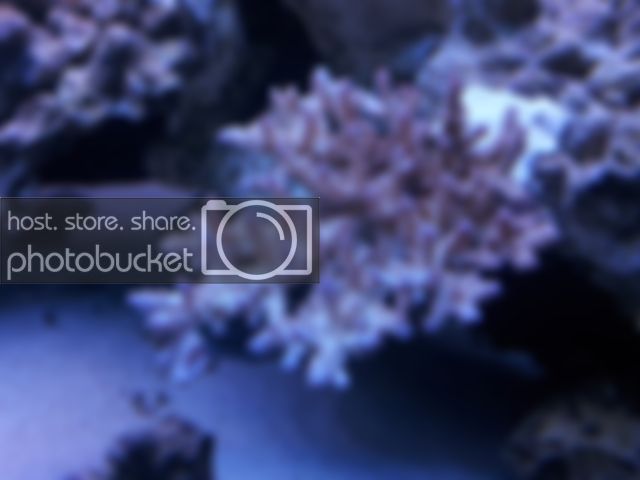
1/14/13
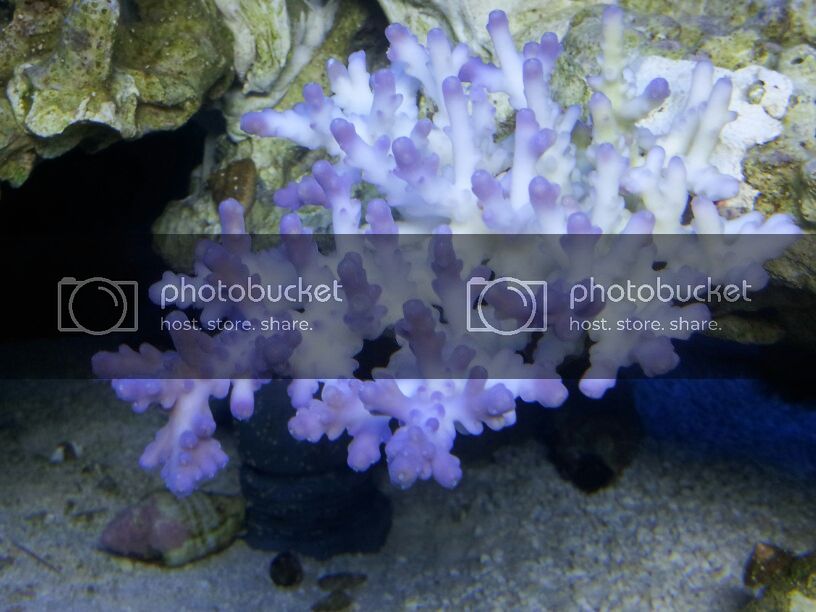
1/28/13 (I just took the picture)
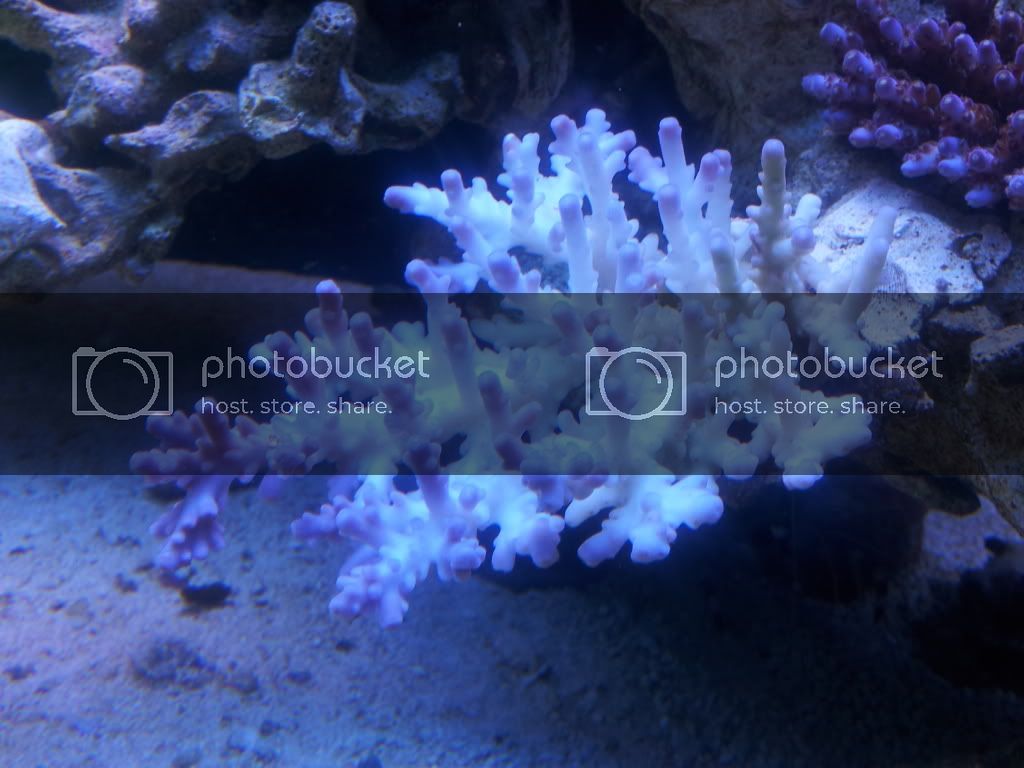
12/15/12 the day that I bought it

12/7/12

1/14/13

1/28/13 (I just took the picture)

Last edited:
Please note that when the light are on you can barely see the green mark.
The water parmeters:
KH 7 (salifert)
CA 430 (salifert)
MG 1350 (salifert)
NO3 0 (salifert)
PO4 0 (Hanna)
The water parmeters:
KH 7 (salifert)
CA 430 (salifert)
MG 1350 (salifert)
NO3 0 (salifert)
PO4 0 (Hanna)
Well it really just looks like it has not been able to acclimate to captive conditions. Again not to sound discouraging but pretty typical of wild colonies. I'd frag the tips. They will have the best chance of making it at this point.
I def think its AEFW and revive works just fine on them in fact julian sprung claims that revive even kills the eggs. Bayer isnt the "only" thing that works on aefw just like heart worm meds arent the "only" thing that kills red bugs. Most people just chicken out and dont use a full dose or dip for the full ten minutes. Here is a quote I found from sprung himself.
QUOTE
Have you considered dipping the affected corals in ReVive Coral Cleaner?
For giant aquariums with giant coral colonies it may not be feasible to remove entire colonies of Acropora, but for most home aquariums this is a much simpler solution compared to treating the whole tank with Interceptor. There is a misconception regarding Red Bugs that they are all over the tank. In fact they are isolated on the Acropora colonies, and usually only on certain species, while they may be absent on others. If you make a seawater bath with ReVive according to the directions, and dip colonies of Acropora for between 10 and 15 minutes, the Red Bugs will fall off and die, and the colonies can be returned to the display aquarium. This treatment is also effective against Acropora Eating Flatworms (AEFW) (including their eggs).
Some recommendations: Use water taken from the display aquarium to make the bath, to minimize the stress on the corals. The corals should be completely submerged, so use sufficient water for that purpose. The water in the bath should be circulating- a small powerhead can be used for this purpose (be careful about water and electricity of course). Also be careful not to blast the corals with too strong a flow from the powerhead!
If your Acropora colonies have commensal crabs, they will jump off when the coral is dipped in ReVive. Quickly remove the crabs from the bath and put them in clean seawater. They will recover as long as they are not left in the ReVive bath for more than a couple of minutes. The crabs do not host Red Bugs, though it is a good idea to rinse them carefully to be sure that no Red Bugs are clinging to their legs.
While the instructions on the bottle of ReVive recommend only a few minutes for the dip, it is necessary to use a dip of at least 10 minutes duration to be sure to kill the Red Bugs and AEFW.
I have been able to eliminate these pests from display aquariums by simply dipping the affected coral colonies.
It is not necessary to dip all corals from the tank--- only the affected Acropora spp. need to be dipped.
I developed ReVive Coral Cleaner and it is a product of my company, Two Little Fishies, Inc.
Sincerely,
Julian Sprung
QUOTE
Have you considered dipping the affected corals in ReVive Coral Cleaner?
For giant aquariums with giant coral colonies it may not be feasible to remove entire colonies of Acropora, but for most home aquariums this is a much simpler solution compared to treating the whole tank with Interceptor. There is a misconception regarding Red Bugs that they are all over the tank. In fact they are isolated on the Acropora colonies, and usually only on certain species, while they may be absent on others. If you make a seawater bath with ReVive according to the directions, and dip colonies of Acropora for between 10 and 15 minutes, the Red Bugs will fall off and die, and the colonies can be returned to the display aquarium. This treatment is also effective against Acropora Eating Flatworms (AEFW) (including their eggs).
Some recommendations: Use water taken from the display aquarium to make the bath, to minimize the stress on the corals. The corals should be completely submerged, so use sufficient water for that purpose. The water in the bath should be circulating- a small powerhead can be used for this purpose (be careful about water and electricity of course). Also be careful not to blast the corals with too strong a flow from the powerhead!
If your Acropora colonies have commensal crabs, they will jump off when the coral is dipped in ReVive. Quickly remove the crabs from the bath and put them in clean seawater. They will recover as long as they are not left in the ReVive bath for more than a couple of minutes. The crabs do not host Red Bugs, though it is a good idea to rinse them carefully to be sure that no Red Bugs are clinging to their legs.
While the instructions on the bottle of ReVive recommend only a few minutes for the dip, it is necessary to use a dip of at least 10 minutes duration to be sure to kill the Red Bugs and AEFW.
I have been able to eliminate these pests from display aquariums by simply dipping the affected coral colonies.
It is not necessary to dip all corals from the tank--- only the affected Acropora spp. need to be dipped.
I developed ReVive Coral Cleaner and it is a product of my company, Two Little Fishies, Inc.
Sincerely,
Julian Sprung
I def think its AEFW and revive works just fine on them in fact julian sprung claims that revive even kills the eggs. Bayer isnt the "only" thing that works on aefw just like heart worm meds arent the "only" thing that kills red bugs. Most people just chicken out and dont use a full dose or dip for the full ten minutes. Here is a quote I found from sprung himself.
QUOTE
Have you considered dipping the affected corals in ReVive Coral Cleaner?
For giant aquariums with giant coral colonies it may not be feasible to remove entire colonies of Acropora, but for most home aquariums this is a much simpler solution compared to treating the whole tank with Interceptor. There is a misconception regarding Red Bugs that they are all over the tank. In fact they are isolated on the Acropora colonies, and usually only on certain species, while they may be absent on others. If you make a seawater bath with ReVive according to the directions, and dip colonies of Acropora for between 10 and 15 minutes, the Red Bugs will fall off and die, and the colonies can be returned to the display aquarium. This treatment is also effective against Acropora Eating Flatworms (AEFW) (including their eggs).
Some recommendations: Use water taken from the display aquarium to make the bath, to minimize the stress on the corals. The corals should be completely submerged, so use sufficient water for that purpose. The water in the bath should be circulating- a small powerhead can be used for this purpose (be careful about water and electricity of course). Also be careful not to blast the corals with too strong a flow from the powerhead!
If your Acropora colonies have commensal crabs, they will jump off when the coral is dipped in ReVive. Quickly remove the crabs from the bath and put them in clean seawater. They will recover as long as they are not left in the ReVive bath for more than a couple of minutes. The crabs do not host Red Bugs, though it is a good idea to rinse them carefully to be sure that no Red Bugs are clinging to their legs.
While the instructions on the bottle of ReVive recommend only a few minutes for the dip, it is necessary to use a dip of at least 10 minutes duration to be sure to kill the Red Bugs and AEFW.
I have been able to eliminate these pests from display aquariums by simply dipping the affected coral colonies.
It is not necessary to dip all corals from the tank--- only the affected Acropora spp. need to be dipped.
I developed ReVive Coral Cleaner and it is a product of my company, Two Little Fishies, Inc.
Sincerely,
Julian Sprung
I hate to disagree with someone as knowledgable as Julian Sprung, but in this case I must. Revive is not effective treatment for AEFW. I tried it and yes I left the corals in there for the full 15 min. At the recommended strength. The ONLY thing that worked for my tank was Bayer. I fought them for months until I found out about Bayer. And interceptor may not be the ONLY treatment for red bugs BUT it is the safest and most convenient for most reefers (whole tank Tx as opposed to single colonies). Yes it kills the pods, crabs and shrimp (the ones you don't catch ahead of time anyway) but they can be repopulated rather quickly.
As for the coral pictured I agree with Battlecorals about a wild colony unable to adjust to captivity. I don't see any signs of infestation from RB or AEFW in the pictures.
Using revive worked for me and several other local reefers. We set up a three big vats with heated good flowing salt water. Added the revive to one and kept the other two fresh water for rinsing. Took the rocks out in stages and dipped all the colonies at once. started at one end of the tank and worked down. we repeated this process ten days later then a final time fifteen days after the second dip though after the first dip no flatworms were seen(just precautionary as they do swim and could be in the water column when we tore out the rock). Not every method works for every reefer but revive worked for us in our little reefing community. The only wrong course of action is inaction. I have yet to find even one thing in this hobby that is universal. Sorry for jacking the thread I hope its only an acclimation problem aefw can cause alot of heartache. :cheers:
+1 looks like unhappy wild, he wishes he still lives in the ocean thats all. Its always a gamble bringing in wild colonies, although ime they are a lot better than maricultured.I hate to disagree with someone as knowledgable as Julian Sprung, but in this case I must. Revive is not effective treatment for AEFW. I tried it and yes I left the corals in there for the full 15 min. At the recommended strength. The ONLY thing that worked for my tank was Bayer. I fought them for months until I found out about Bayer. And interceptor may not be the ONLY treatment for red bugs BUT it is the safest and most convenient for most reefers (whole tank Tx as opposed to single colonies). Yes it kills the pods, crabs and shrimp (the ones you don't catch ahead of time anyway) but they can be repopulated rather quickly.
As for the coral pictured I agree with Battlecorals about a wild colony unable to adjust to captivity. I don't see any signs of infestation from RB or AEFW in the pictures.
In the last photo that you posted it looks like you have the same species to the right or behind the coral that you are having issues with. Is the coral being blasted by too much light such as LED's? Its badly bleached but can possibly be saved. Wild colonies can be extremely difficult at times especially if placed directly in high light.
Have you confirmed if you have flatworms?
Have you confirmed if you have flatworms?
Similar threads
- Replies
- 7
- Views
- 443
- Replies
- 4
- Views
- 150
- Replies
- 1
- Views
- 282
- Replies
- 3
- Views
- 89
New Posts
-
Question about light switching from AI Prime 16 to XR15
- Latest: officialreefbros
-
-
-


